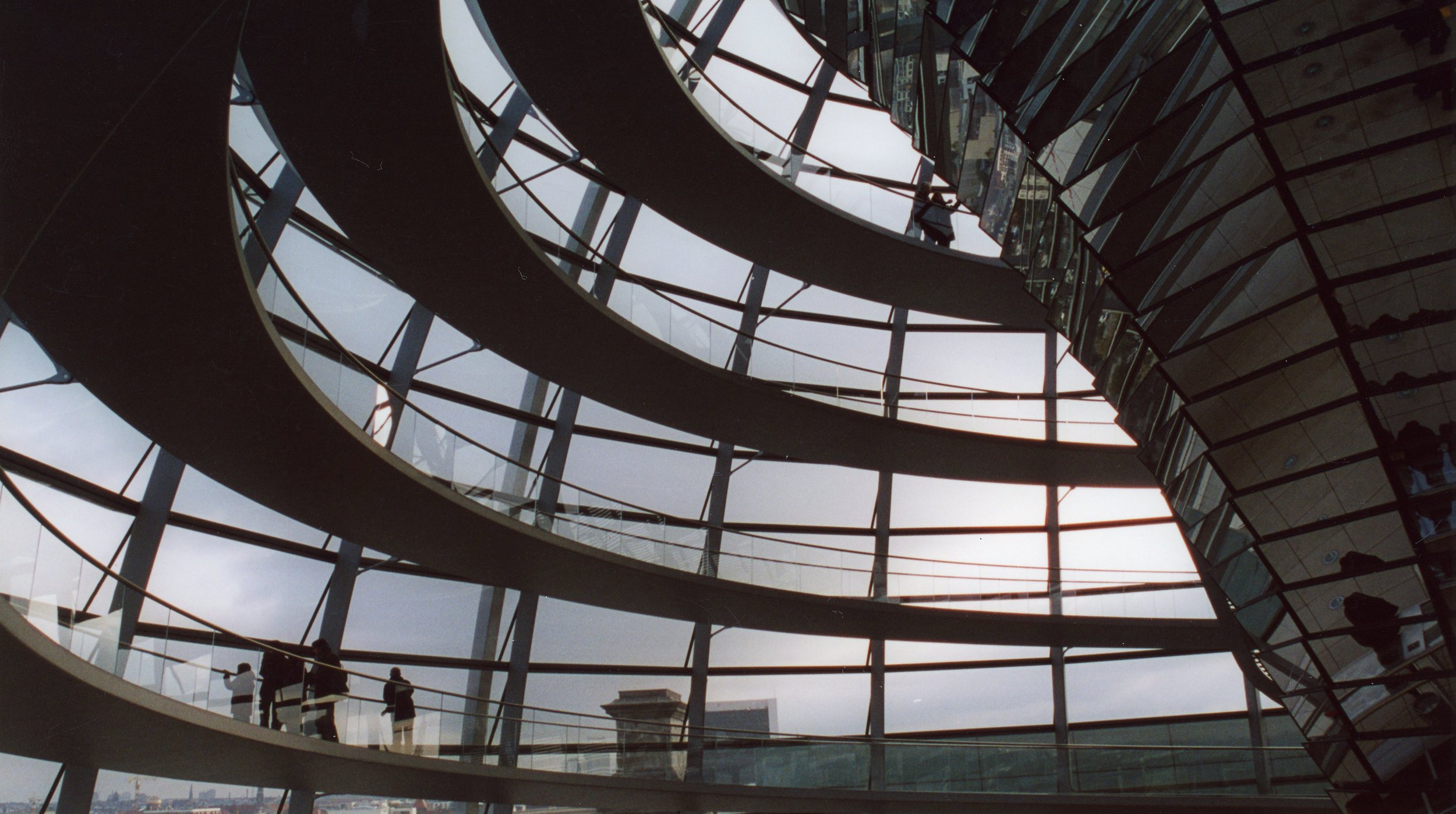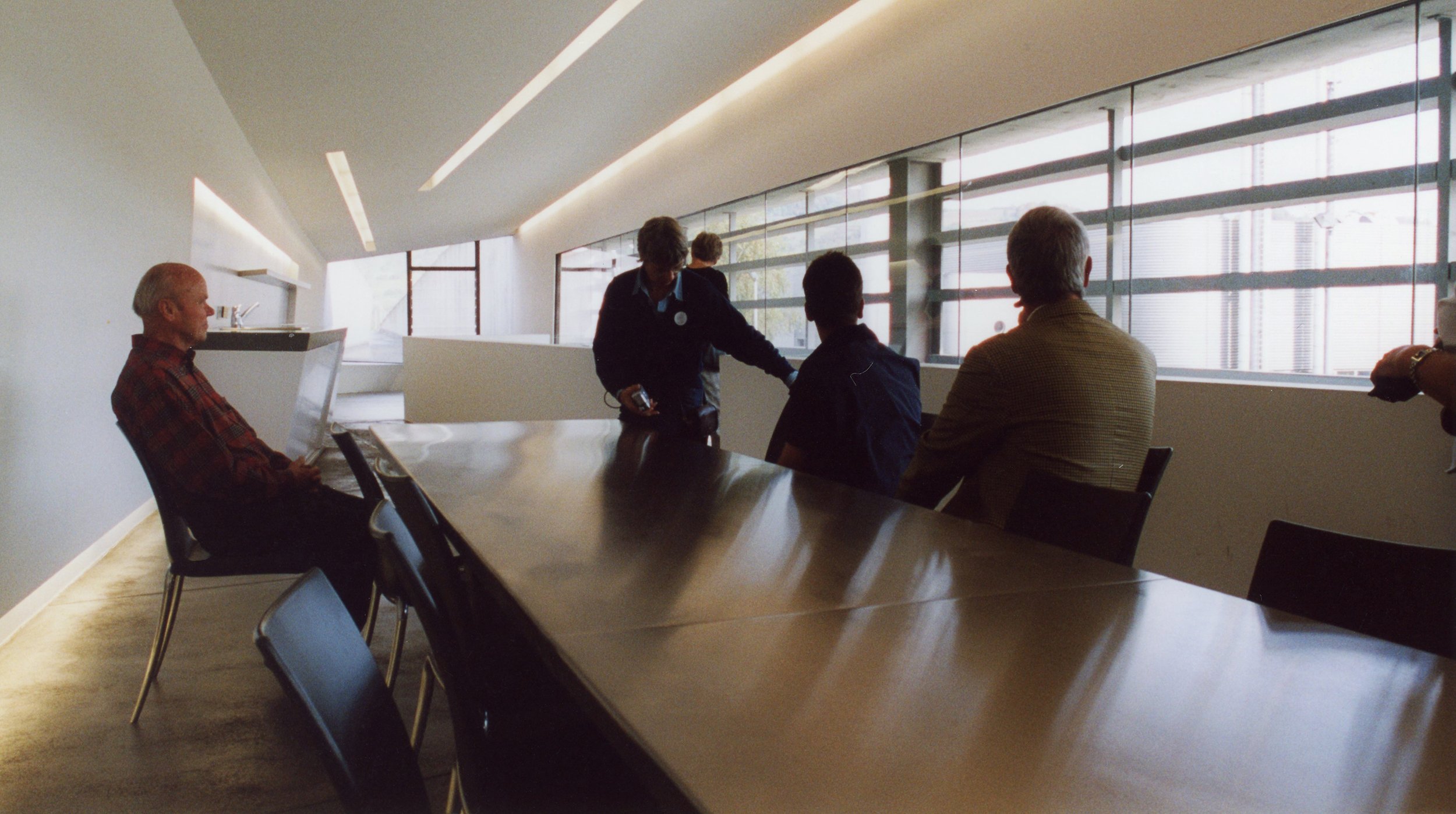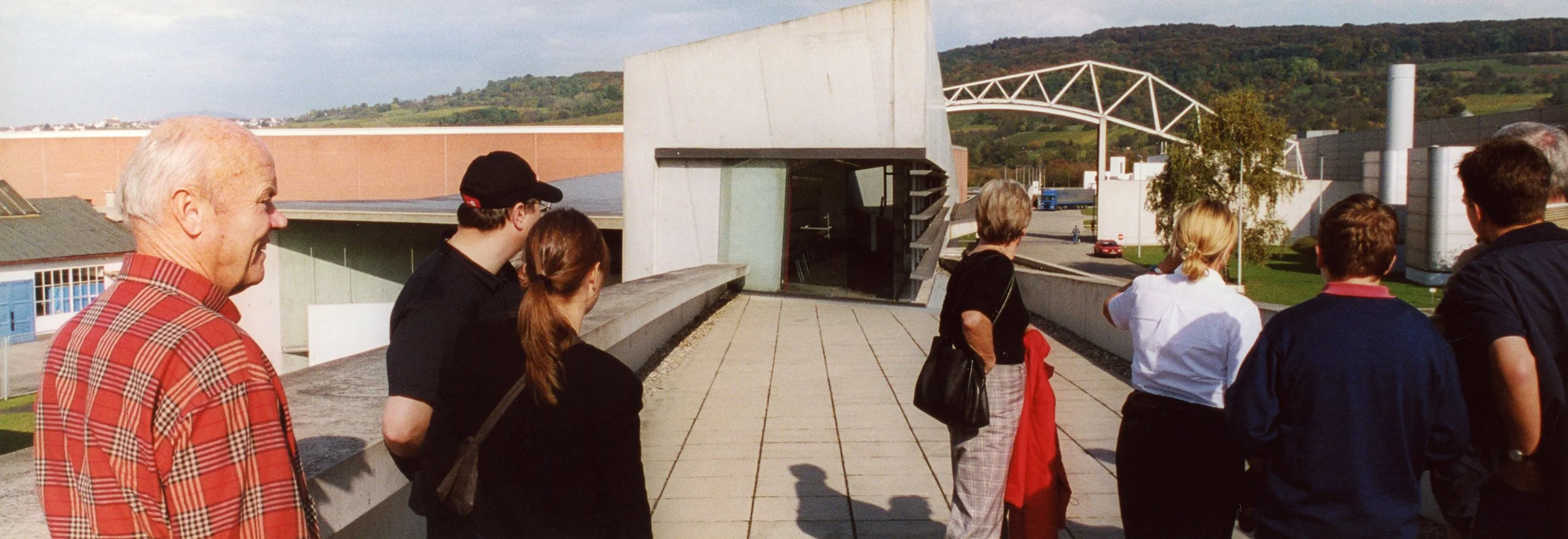
Page 3 of 7
Weil-am-Rhein, Germany
Too much is not enough
Vitra. The very name (among certain design professionals at least) conjures up images of a magical place far away- a place with a tiny little factory where little tiny men (possibly little tiny singing men) diligently hand craft little tiny chairs that will eventually be sold as gifts in the design stores of better modern art museums across the globe. After a visit, I found the reality (somewhat) different.
The Vitra compound is in Weil-am-Rhein, Germany, well, actually not in Weil-am-Rhein but in reality out of town in an industrial park next to the BMW dealership. You know you're there when suddenly faced with a large Claes Oldenberg sculpture and two very different public buildings- a very flashy design museum by American architect Frank Gehry and an extraordinarily understated (and partially underground) conference center by Japanese architect Tadao Ando. But the biggest draw far and away isn't Frank Gehry or Tadao Ando (or Nicholas Grimshaw or Alvaro Siza) but a firehouse hidden deep behind the well guarded gates, a firehouse designed by Iraqi born British architect Zaha Hadid.
I had first heard of Zaha Hadid at Philip Johnson's infamous "Deconstructivist Architecture" exhibit at New York's old Museum of Modern Art in 1988, it was my second year of architecture school and the first real architecture show that I ever seen. It arbitrarily attempted to define a movement by pushing disparate and (partially) unknown architects such as Frank Gehry, Daniel Libeskind, Peter Eisenmann and Zaha Hadid (see below). Her included project was like most of her projects, beautiful to look at but over presented and just damn confusing. The first thing she ever built (and this was at least six or seven years ago) was Vitra's very own firehouse, as complex as expected and clearly worth the trip.
Technically a failure as a firehouse, the building is now used primarily as a major draw for daily two hour architecture tours (all in German); its garage contains no trucks but a large, full size exhibit of famous chairs instead. While it may be a failure, it is at least a damn cool looking failure.
My favorite space and one of my favorite pictures in this slide show. The upstairs firemen's lounge was a great area for a brief respite after walking and pretending to understand German for a good two hours.
Here’s the back of the firehouse with its somewhat wondrous reflections and somewhat questionable bench.
From the roof of the firehouse (yes, that firehouse) toward the (sub)urban, wooded hills of the greater Basel region. Two quick notes- the edges of the Nicholas Grimshaw warehouse are on the right, and the fake bridge to the Siza warehouse actually pivots to create a covered walkway between buildings during the inclement weather so popular in that part of severe southern Germany.
My second favorite of the Vitra pictures, the edges of the firehouse lurch toward Alvaro Siza's warehouse and ever so symbolic bridge
Well before he ever discovered shiny, shiny titanium panels, Frank Gehry's Vitra Design Museum screams "look at me!" across the industrial plains of Germany.
Past the gate and closer to the road and all of the action, this is the conference center by Japanese architect Tadao Ando. Partially underground, it kept surprising me at every turn and was probably better (though not nearly as cool) as that damn firehouse.
If you look really, really hard you can see Tadao Ando's conference center- it's the low profile concrete wall past the two white, twisting high profile Frank Gehry buildings.
In front of the conference center, a final Vitra picture. A typical Claes Oldenburg sculpture, giant tools in a land of tiny chairs.











